PES Ironside is a 2,500-square-foot exhibition space that opened in the fall of 2024 with Azikwe Mohammad’s Artist In Residence exhibition. It is two short blocks from our Flagship location, 800 Broad Street.
PES Ironside primarily presents our Artist In Residence exhibitions. It is also home to our Public Art programs, including the future Newark Grounds program. The gallery is strategically accessible through Mulberry Commons Park, a community park for people of all ages. In collaboration with numerous community partners, the Newark Grounds initiative aims to create a joyful space for communities to interact. In the coming years, PES will bring rotating public art projects to complement the park's many features, which serve children of all ages and the broader community.
PES Ironside is located within the historic Ironside building. Constructed in 1907 to accommodate railroad freight storage, Ironside Newark was initially known as the Newark Warehouse Company Building.
CURRENTLY ON VIEW:
DAPHNE ARTHUR’S FRAGILE INTANGIBILITIES












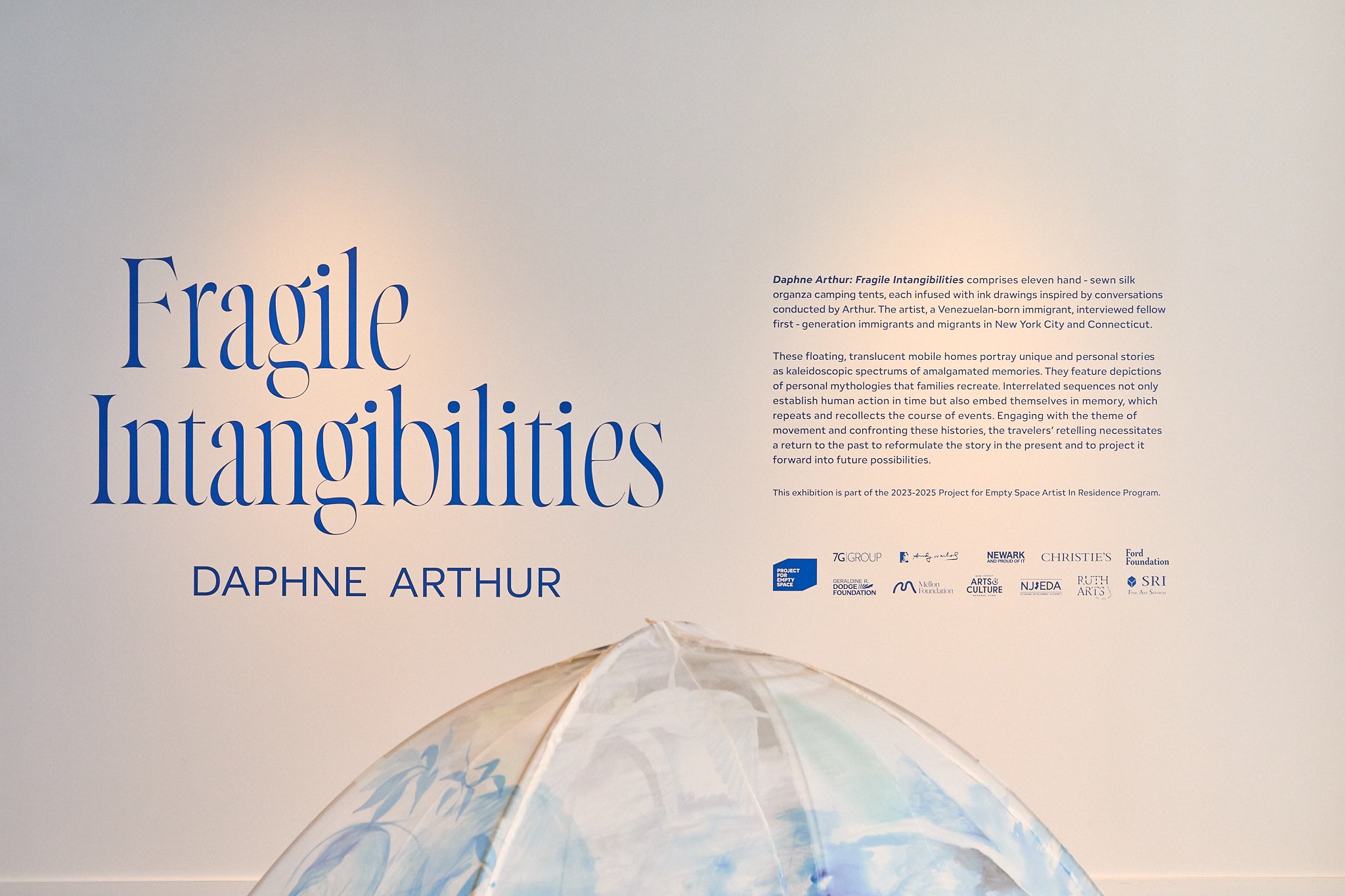

Project for Empty Space is delighted to present Fragile Intangibilities, a solo exhibition by 2023 - 2025 Artist In Residence Daphne Arthur at PES Ironside Newark (110 Edison Pl.) from February 15th through April 27th, 2025.
Fragile Intangibilities comprises 11 hand-sewn silk organza camping tents. Each tent is suffused with drawings made with ink that are inspired by interviews that Arthur conducted. Arthur, a Venezuelan-born immigrant, was in conversation with fellow first-generation immigrants and migrants in New York City and Connecticut.
These floating, translucent mobile homes depict the unique and personal stories as kaleidoscopic spectrums of amalgamated memories. They contain depictions of personal mythologies that families reproduce. Interrelated sequences do not merely establish human action in time, they also establish themselves in memory, which repeats, and re-collects the course of events. Engaging the theme of movement and confronting these histories, the travelers’ retelling requires a return to the past, to reformulate the story in the present and to bring it forward to the possibilities of the future.
Each tent reaffirms diaspora as a living condition of resilience, family reunification, and sacrifices made in aspiring for viable futures. They propose that migration be a process that allows for a hybrid identity, not defined by a single location or by belonging to a monolithic group. The lack of a specific place to call home challenges the universal reliance on origin, nationality, and family as the only principles on which an identity can be based. Arthur’s work signifies how identity, thus, stops being something inherited or constructed based on an affiliation to a socially or geographically prescribed group. Instead, identity evolves in relation to movement through social and geographic spaces. Moreover, the self emerges as a result of the encounters with others that these spaces afford. The transitory and intangible nature of these homes are metaphors for the memories we carry and conjure within our bodies connecting sinews, grafted in our psyche, of site-specific occurrences that, beyond chronology, expand collectively into time immemorial.
Capturing migratory experiences, each tent reflects on the subject's views and interpretation of deterioration, transformation, and the stakes of historical change. Echoing recent and contemporary patterns of gentrification, the works re-focus on the corrosion of marginalized communities and their local histories. Meanwhile, exploring notions that foster a sense of belonging and identity through landmarked boundaries. The transitory and intangible nature of these homes are metaphors of memories we carry and conjure within our bodies - connecting grafted sinews in our psyche of site-specific occurrences that expand beyond chronology, collectively into time immemorial.
Installation images by Carlos Hernandez.
Opening reception images by Sam H. Lee.
Project for Empty Space is thrilled to announce the pre-release of an editioned artist book by our Artist in Residence, Daphne Arthur. This 40-page, 6” x 9” mixed-media art book presents images from her exhibition, Fragile Intangibilities, and includes contributions from Ayokunle Falomo, Tobias Wray, and Claudia E. Zapata. The book features delicate, hand-painted silk organza layers that separate the text, beautifully mirroring the exhibition’s primary translucent material. This limited edition of 100 copies is signed by the artist.
The official book release party will take place on Wednesday, April 16, from 6–8 PM at PES Ironside (110 Edison Place, Newark, NJ). Alongside the release an artist talk will take place with fellow PES Artist in Residence, Layqa Nuna Yawar highlighting the exhibition, and their role in immigrant storytelling.
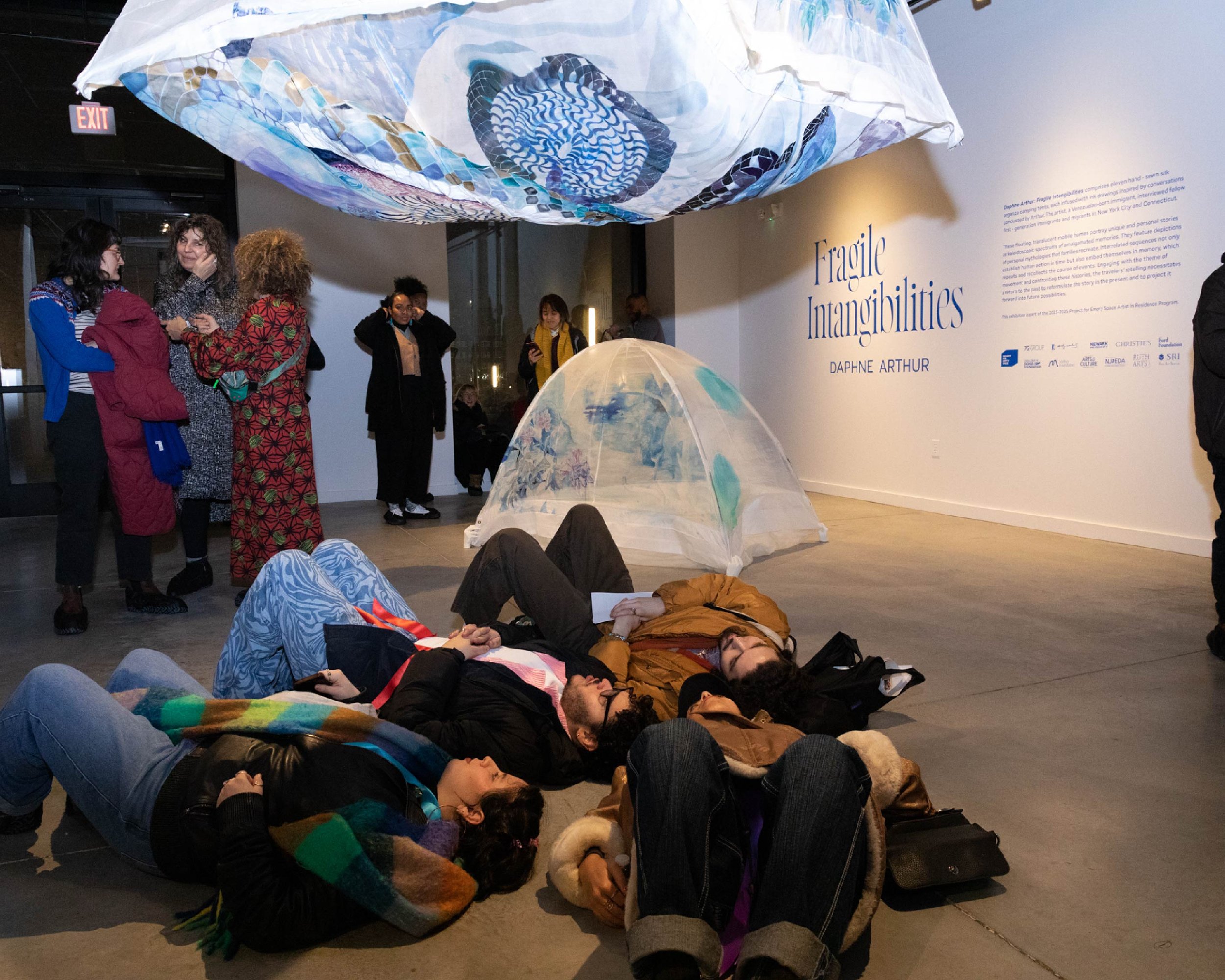
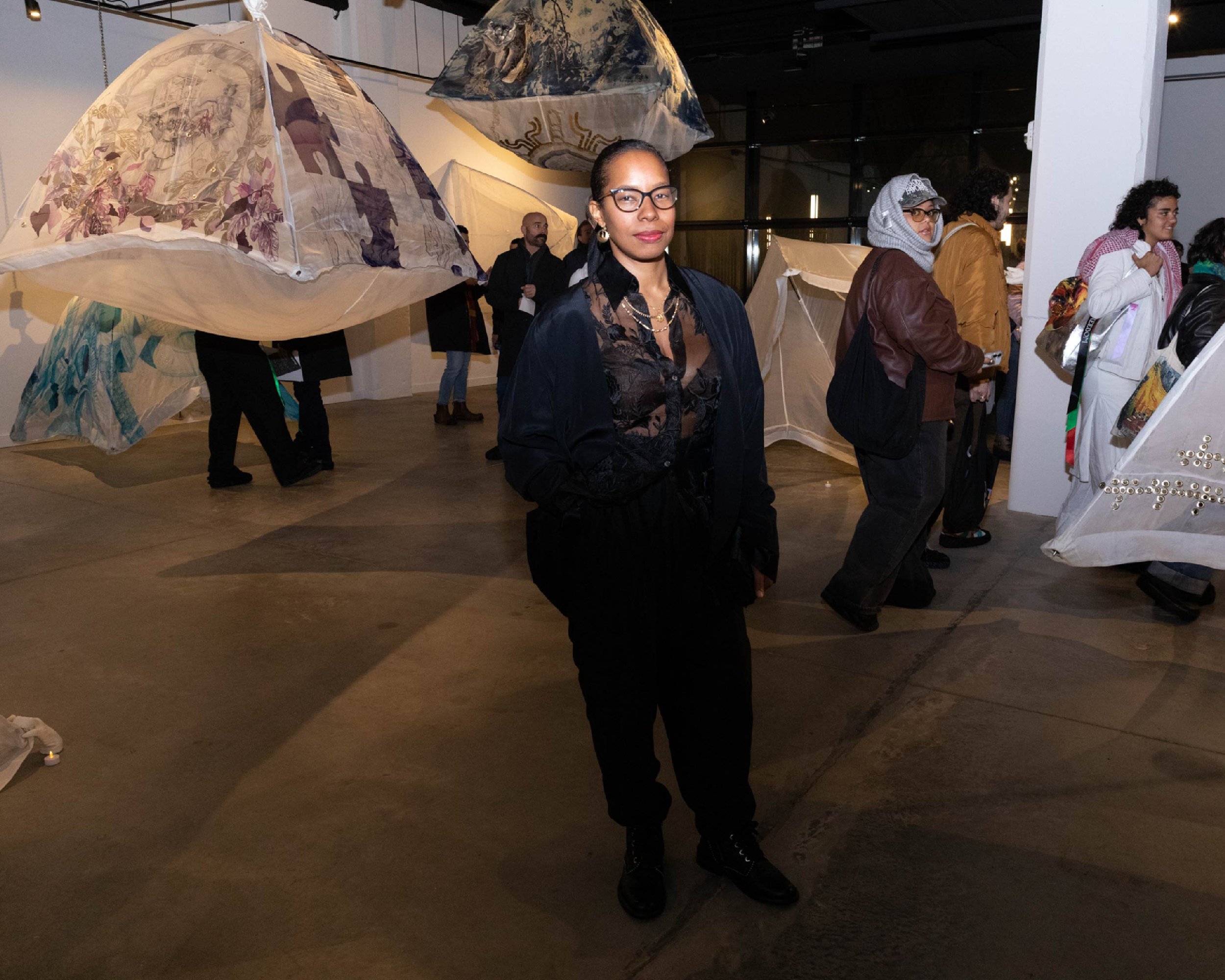


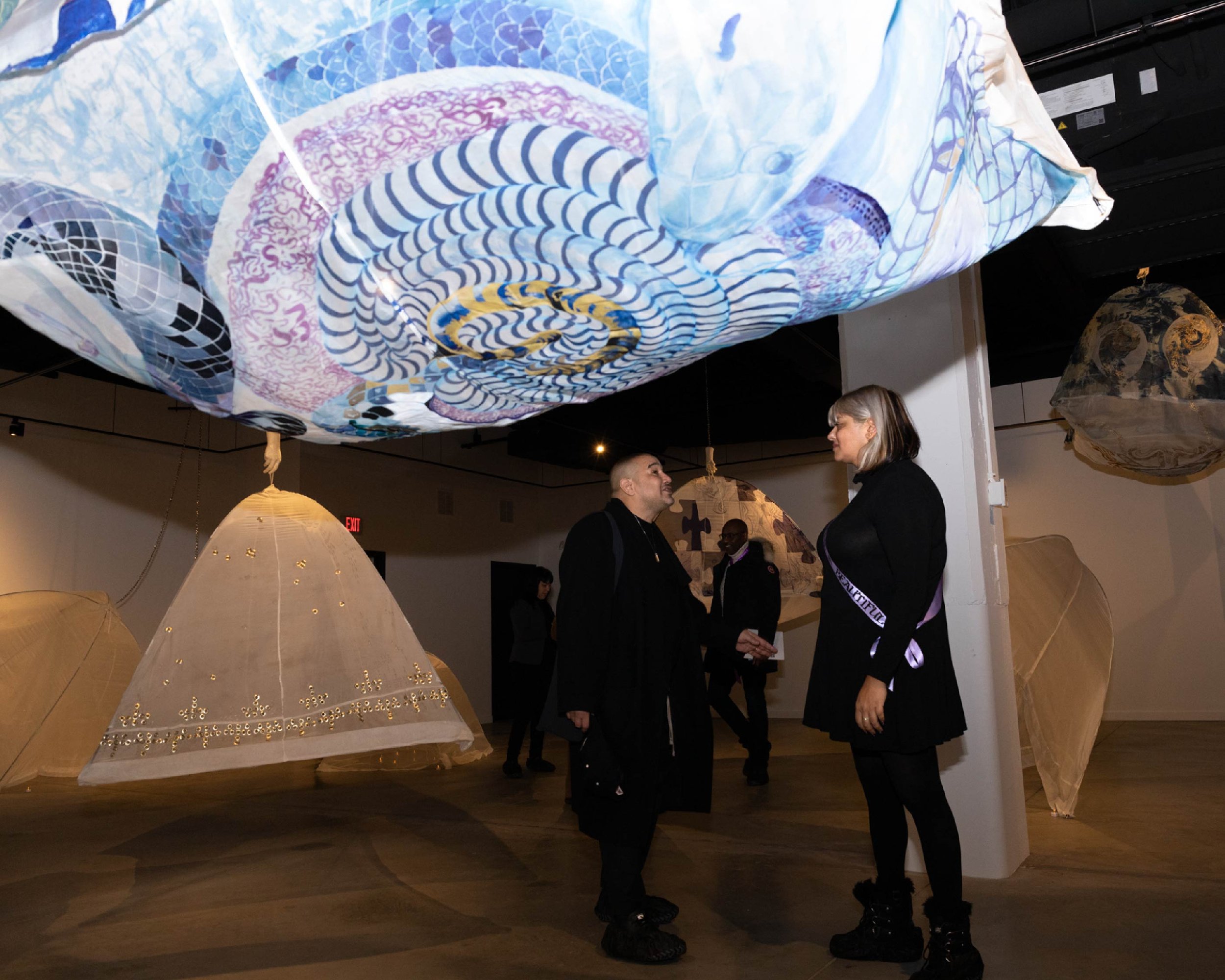
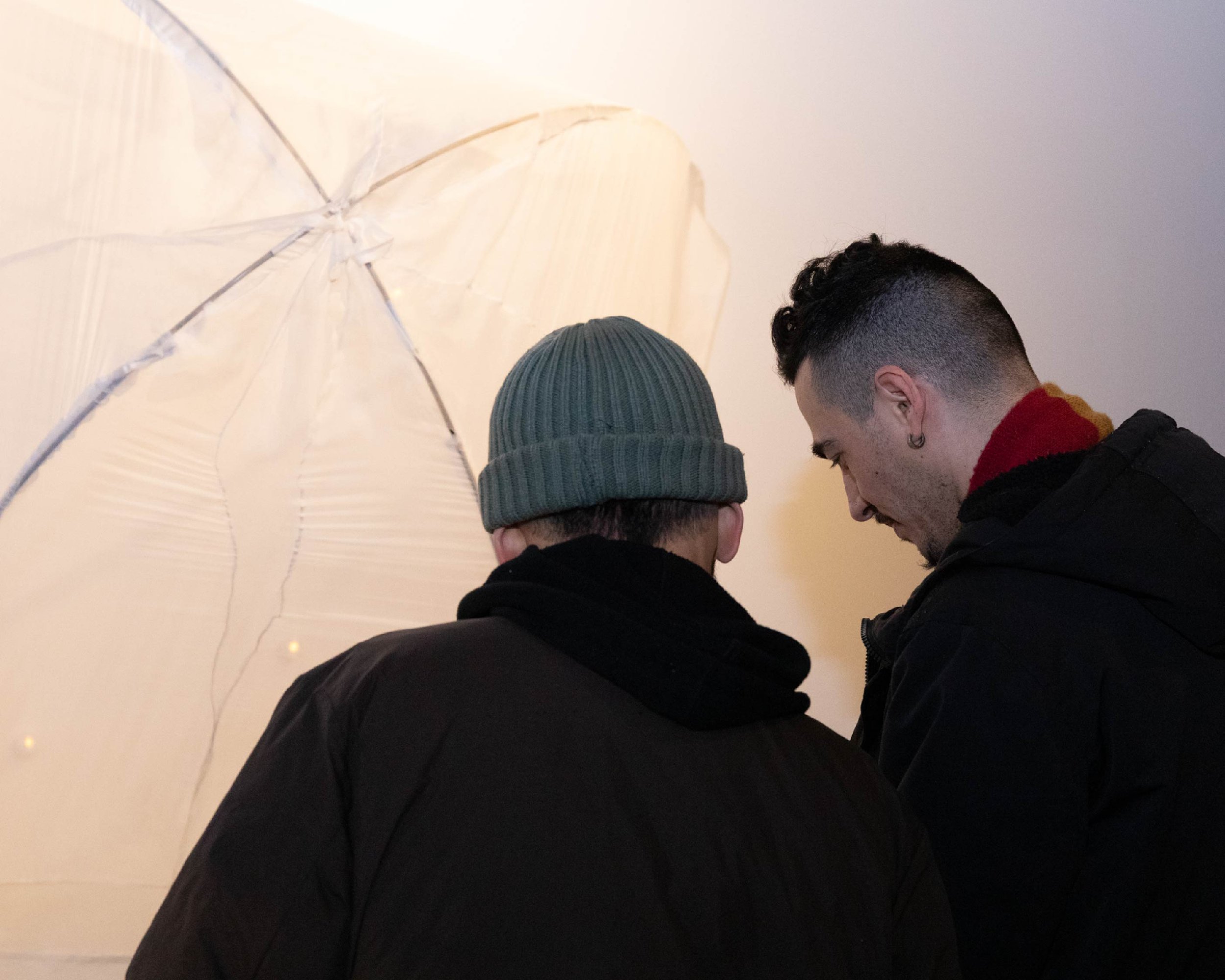





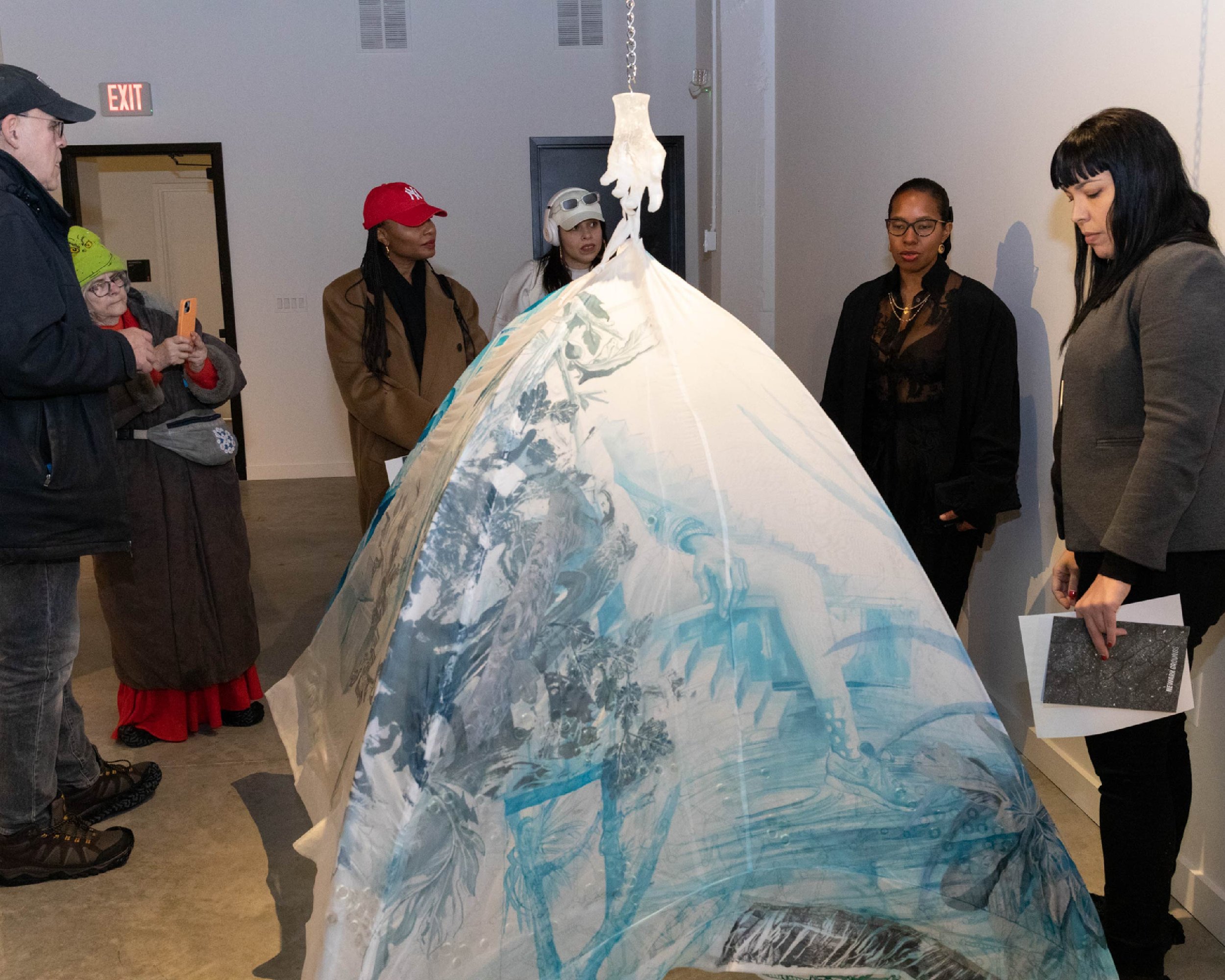
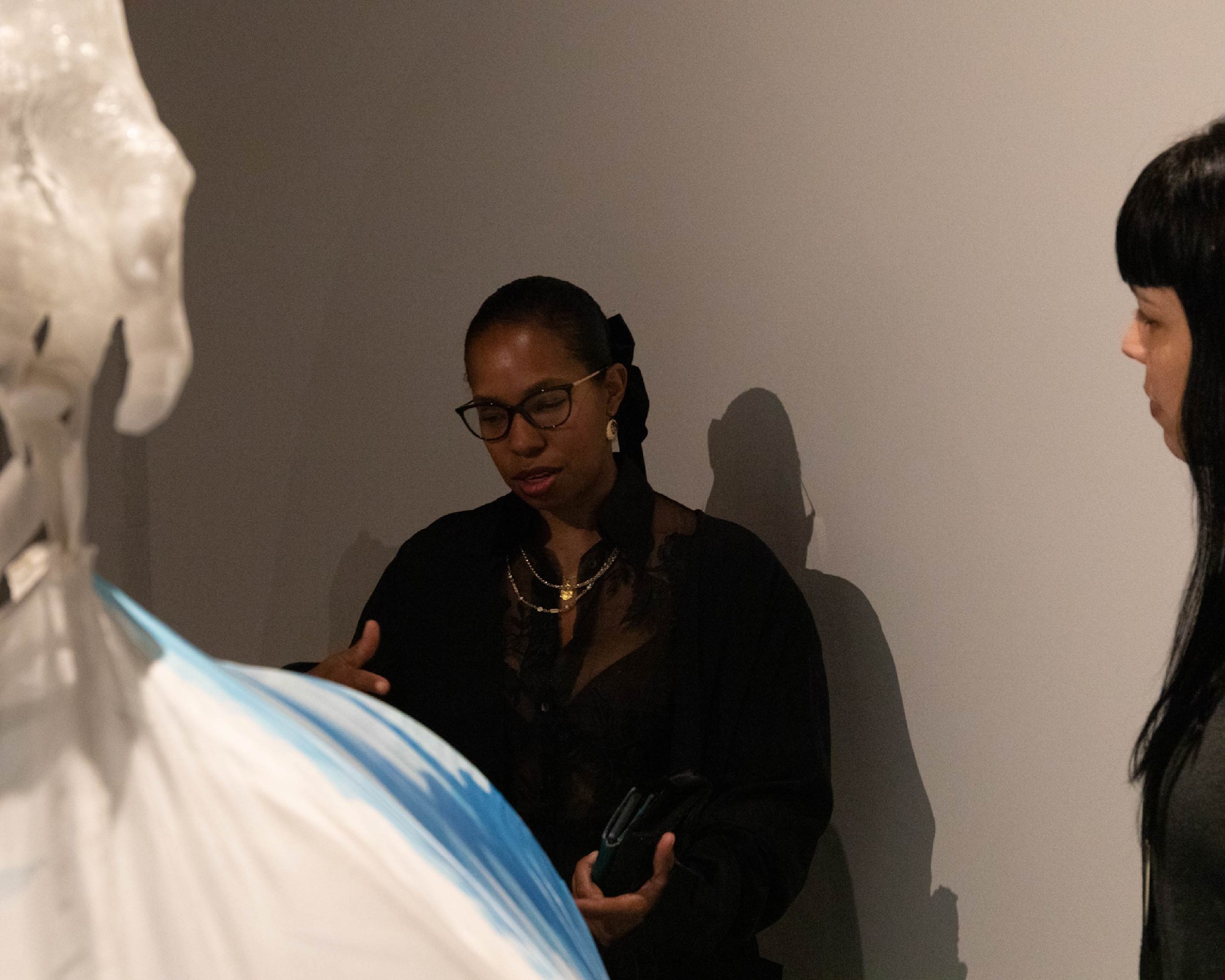

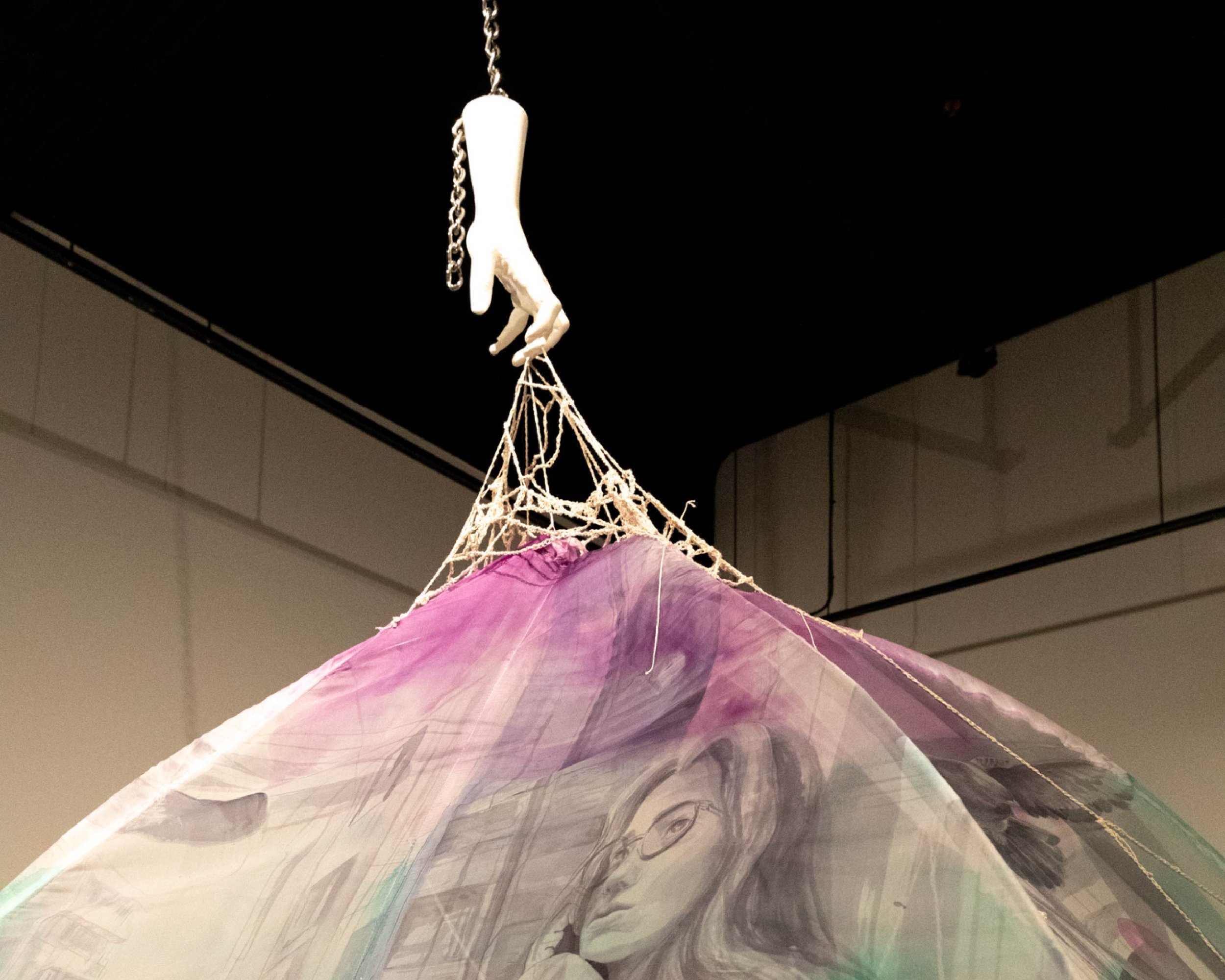
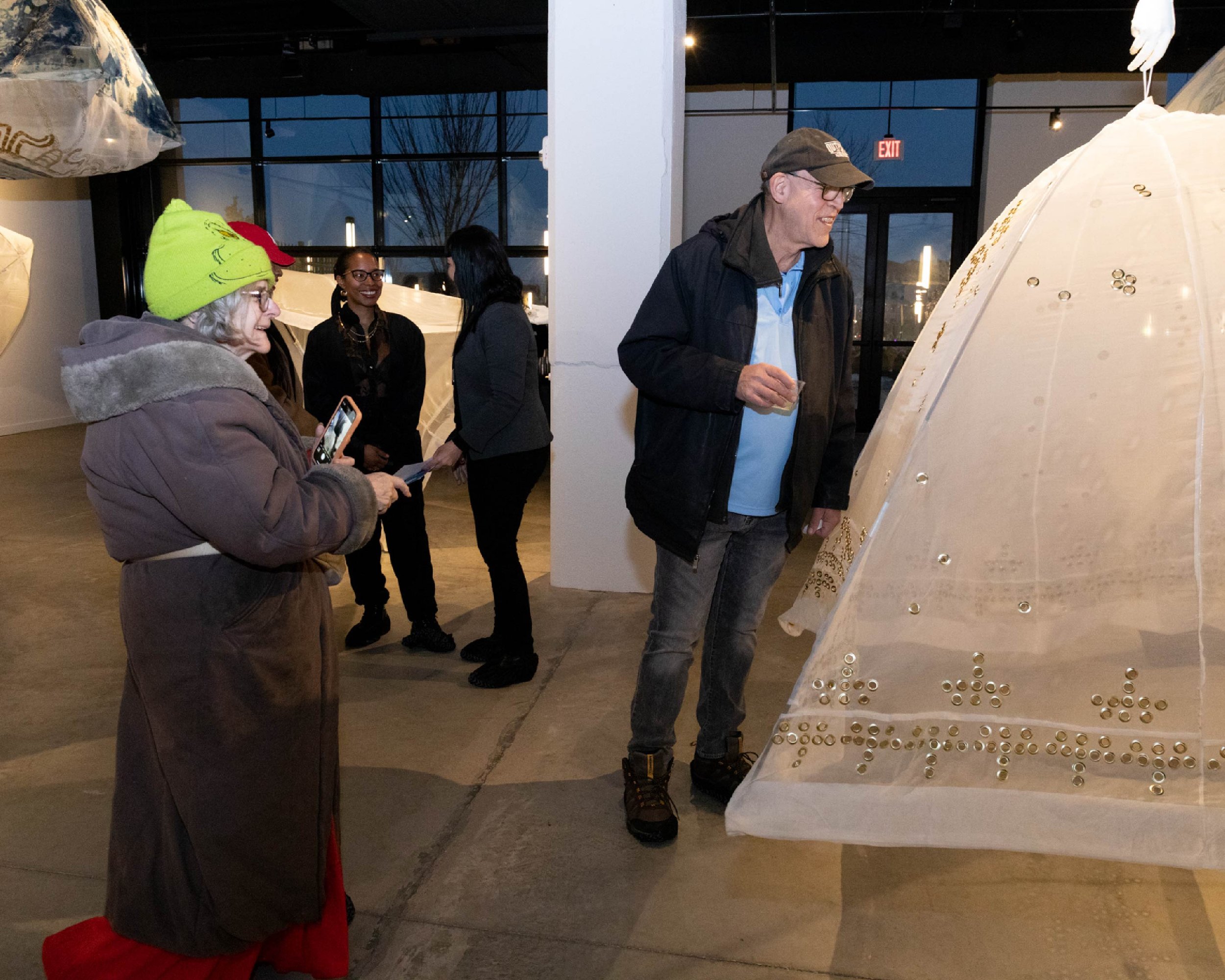



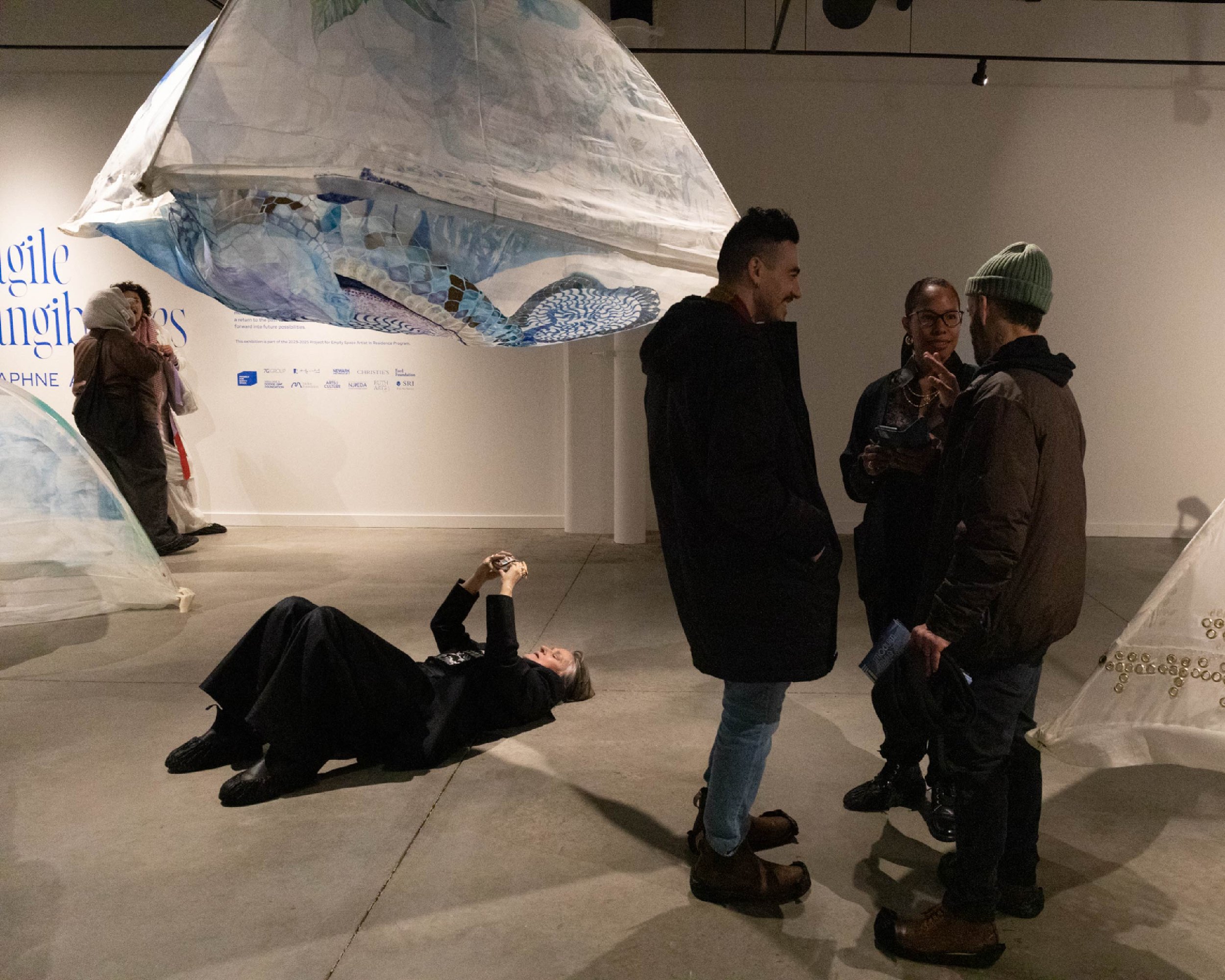
About Daphne Arthur
Daphne Arthur’s (b. 1984, Caracas, Venezuela) practice navigates the interconnection of experiences beyond boundaries, exploring the kinship between human relations and nature in the delicate threads that balance ecosystems of cosmic existence. Within the intersection of the personal and universal, her allegories integrate interior, exterior, micro, and macro futuristic spaces where BIPOC protagonists emerge, exploring the roles history, memory, and mythology play within the transformation or deterioration of the collective imaginary of people from the diaspora.
Arthur received her BFA in Painting and Drawing from the School of the Art Institute of Chicago in 2007, and an MFA from the Yale School of Art in 2009. Recent residencies and fellowships include the Project for Empty Space Artist-in-Residence Program, Ucross Foundation Residency, Virginia Center for the Creative Arts Residency, Pocoapoco Residency, MassMoca Artist Residency, and The Alma B. C. Schapiro Residency. She is the recipient of The Helene Wurlitzer Foundation Fellowship, the Anne Critz Fellowship, The Al Held Fellowship at the American Academy of Rome, the Vermont Studio Center’s Pollock-Krasner Foundation Fellowship, and The New York Foundation for the Arts Queens Art Fund: New Work Grant. Recently her work has been featured in New American Paintings Northeast publications #164 and #170. Arthur is currently based in New York City, where she also teaches at York College, Brooklyn College, and Columbia University.


